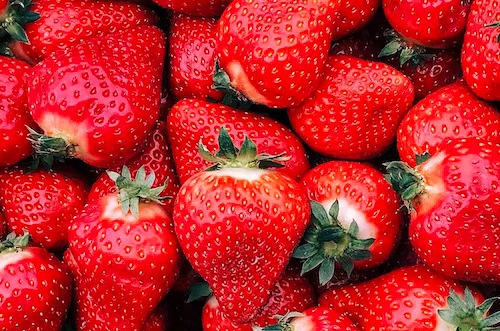
In W20 in the strawberry landscape, it was reported that in the United States, demand for Californian strawberries has been slightly low, and supplies are steadily increasing as plants grow despite being slowed by rains and cold temperatures. Florida farmers are vital contributors to food production in the United States, with a focus on winter crops that generate over USD 7B in revenue. Among these specialty crops, strawberries generate USD 400M annually. The agricultural sector in Florida has faced significant challenges due to extreme weather conditions. In 2022, Hurricane Ian caused losses exceeding USD 1B for the state's agriculture industry. During April, the price of strawberries increased by 65.2% in the Argentina market due to higher prices in the province of Buenos Aires, which is in season and has higher quality strawberries.
The Ministry of Agriculture, Fisheries, and Food of Spain responded to the Association of Strawberry Producers and Exporters of Huelva (Freshuelva) by excluding berries from the requirement of being sold in bulk. This exemption applies to presentations of less than 1.5 kg and acknowledges the risk of deterioration or decline associated with selling berries in bulk. Freshuelva has argued that berries like strawberries, raspberries, blueberries, and blackberries are not suitable for bulk sales due to their low consistency, which would result in significant losses during marketing. In addition, researchers from the University of Córdoba, Spain, have made breakthroughs in understanding the characteristics behind the red coloration of ripe strawberries. The Vegetable Biotechnology and Pharmacognosy research group has identified the protein called FaMYB123, which is responsible for activating or representing the expression of other genes involved in coloration, and has a crucial role in the production of anthocyanins, the pigments that give strawberries their characteristic red color. The discovery could benefit breeders and producers in Spain, and other strawberry-growing regions, by providing new knowledge for genetic manipulation and breeding programs related to strawberry ripening and color development.
In the Polish market, only strawberries from crops grown under cover are available, resulting in higher prices at the beginning of the season. In the wholesale market in Bronisze, strawberries are priced at USD 3.81-5.95/kg (PLN 16-25/kg), a decrease in WoW. On the Targpiast wholesale market in Wrocław, strawberries stood at USD 5.71-6.18/kg (PLN 24-26/kg), compared to USD 4.76-6.42/kg (PLN 20-27/kg) in W19, and organic strawberries stood at USD 9.51/kg (PLN 40/kg). The supply of strawberries is expected to increase, with traditional soil-grown strawberries anticipated in early June. On the other hand, the strawberry season in France had a better start compared to 2022, with favorable weather and moderate temperatures, resulting in good quality strawberries and a well-spread production throughout the season. Lastly, severe frost affected strawberry plantations in central regions of Ukraine, particularly in Cherkasy and Vinnytsia. The frosts occurred on the night of May 11-12 and caused temperatures to drop below zero. At the end of April, Ukraine's soft fruit sector also experienced frost damage, with temperatures reaching as low as -5ºC in northern regions. Fruit producers in affected areas had to implement frost protection measures to minimize crop losses. However, the May frost had a more significant impact on strawberry plantations during their flowering phase, especially in lower-growing areas, severely damaging strawberry crops.




